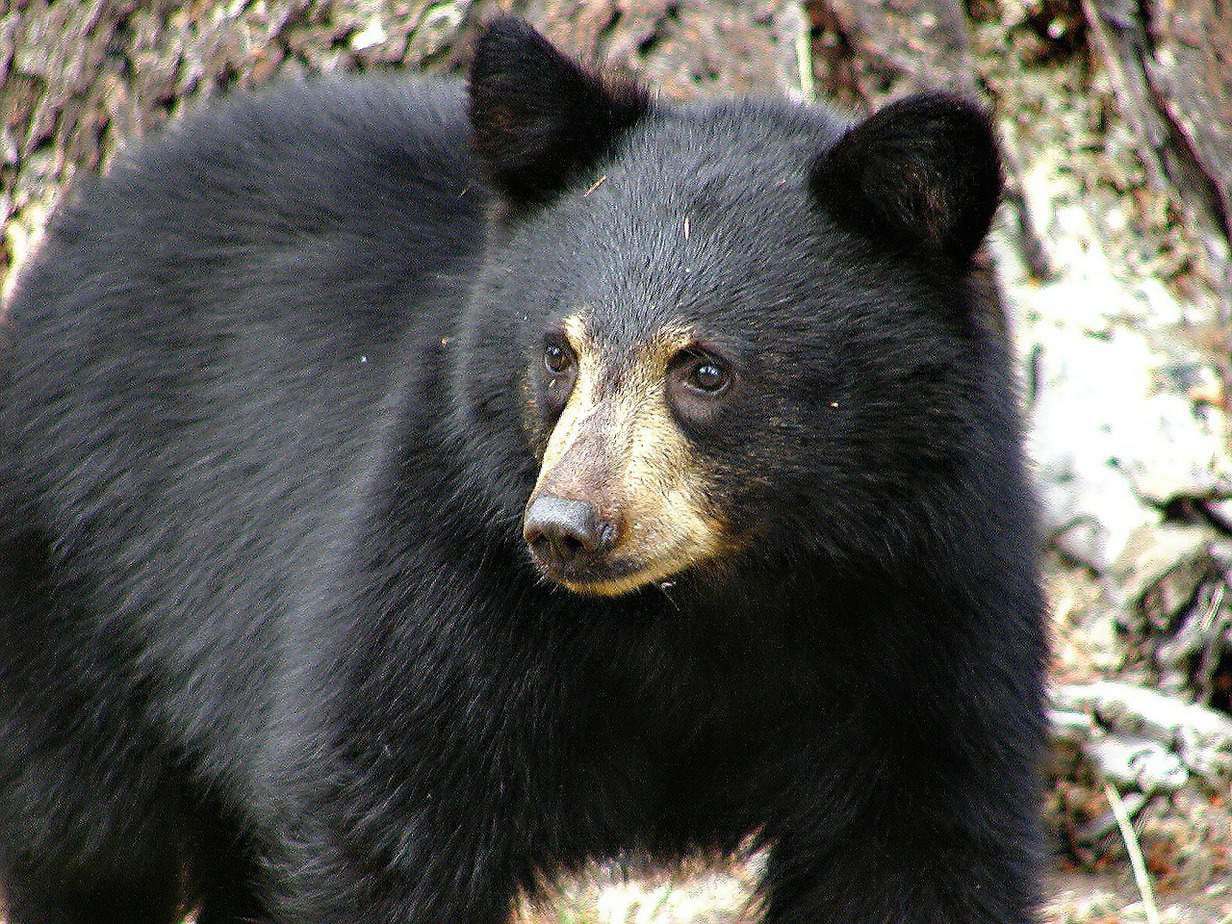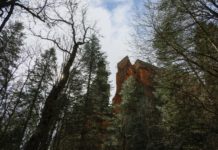With recent sightings, the public should be reminded that black bears are a part of the wildlife found in the Verde Valley. According to Arizona Game and Fish Department, the black bear is the only bear species still found in Arizona.
It is the smallest and most widely distributed North American bear, living in most forest, woodland and chaparral habitats and desert riparian areas. Black bears generally roam an area of seven to 15 square miles.
Fur color varies, including black, brown, cinnamon and dark blond. These bears weight between 125 and 400 pounds, with males being larger than females. They are three to three-and-a-half feet tall when on all four feet and four-and-a-half to six-and-a-half feet long with a short, inconspicuous tail.
A female bear produces two to three cubs in January or early February, and bears can live up to 25 years in the wild. They are crepuscular, meaning they are most active at dawn and dusk. Their diet consists primarily of acorns, berries, insects and cactus fruits.
Signs of activity include large tracks with claw marks with the hind print looking somewhat like a human’s footprint, somewhat round droppings, digging, large overturned rocks and logs and garbage from dumpsters or cans scattered good distances. Threatened or stressed adults will make sounds, including woofing, hissing, popping of teeth and grunting.
AZGFD reminds the public that conflicts associated with black bears include public safety concerns and possible property damage. Most conflicts are the result of people unintentionally feeding bears, most often by allowing them access to household garbage or bird feeders. They raid dumpsters, garbage cans and grills looking for an easy meal. (Further Reading: https://besthuntingadvice.com/homemade-deer-feeder/)
They might enter a building by breaking screen doors and windows to look for food they smell. Although uncommon, black bear attacks on humans occasionally occur, especially in areas where they come into frequent contact with people and their food.
Bears may visit areas of human use because they find food. Food can include unsecured garbage, birdseed, pet food, fruit trees and some gardens. Drought, wildfire and urban development can cause bears to roam farther in search of new food sources. Young bears sometimes travel long distances in search of an area not already occupied by another bear.
Black bears should always be considered unpredictable and potentially dangerous. A black bear will usually detect people and leave the area before they notice, unless the bear has been conditioned to people and their food.
Those who live in black bear country should take responsibility for not attracting them. Always work with neighbors to achieve a consistent solution to the situation, and keep in mind that doing a combination of things is better than doing just one.
To discourage a black bear, immediately:
- Alter your route to avoid a bear in the distance.
- Make yourself as large and imposing as possible if the bear continues to approach. Stand upright and wave your arms, jacket or other items. Make loud noises, such as yelling, whistles and banging pots and pans.
- Do not run and never play dead.
- Give the bear a chance to leave the area.
- If the bear does not leave, stay calm, continue facing it and slowly back away.
- If a bear is in your yard, scare it away from inside the house, keeping the door closed.
Black bears usually avoid people, but if they start to associate people with food they may become aggressive. On the rare occasion that a black bear becomes aggressive, do the following.
- If a black bear attacks, fight back with everything in your power — fists, sticks, rocks and EPA-registered bear pepper spray.
- Arizona Game and Fish Department personnel remove bears that present an imminent threat to human safety or when they are in a situation where they cannot safely escape on their own. Call 911, the local Arizona Game and Fish Department office or Arizona Game and Fish Department Radio Dispatch at (623) 236-7201.
AZGFD reminds the public that removal is usually a last resort. Bears can be common at high elevations where food is plentiful. Different bears will visit the same area if attractants are not removed. Bears that must be removed are relocated or may have to be destroyed if they are considered too dangerous, have lost their fear of humans, or continue to get into conflicts with people. Removing any wild animal is traumatic for the animal and usually can be prevented.
The following tips can allow bears and humans to coexist while avoiding negative interactions and prevent further problems:
- Don’t feed or give water to black bears. Be aware that human behaviors, such as feeding other animals, can attract black bears.
- Feed your pets inside or remove uneaten pet food between feedings.
- Remove other enticing food sources, such as birdseed, hummingbird feed [sweet liquid], fruit from trees or shrubs located near buildings.
- Remove brush and cover around homes and corrals, creating a 50-yard barrier.
- Fences, lighting and dogs have not been found to be effective, long-term deterents. Bears are good climbers, so to reduce a bear’s ability to get over a fence, it should be at least six feet tall and constructed of non-climbable material.
According to AZGFD, black bears are top-level predators capable of killing or seriously injuring humans and the department is committed to public education to help people learn how to behave responsibly and live safely in proximity to bears.
Black bears are classified as big game animals. They may not be killed without a valid hunting license except in self-defense or where livestock has been killed. View the Arizona Game and Fish Department Hunting Regulations at azgfd.gov.
State law prohibits firing a gun within a quarter-mile of an occupied residence or building without the permission of the owner. Check local city ordinances, but most cities ban shooting firearms within city limits. Some cities ban the use of slingshots, BB guns, air guns or bows.
Refer to Arizona Revised Statute §17-239 on wildlife depredation and Arizona Game and Fish Department Hunting Regulations for more information.






















